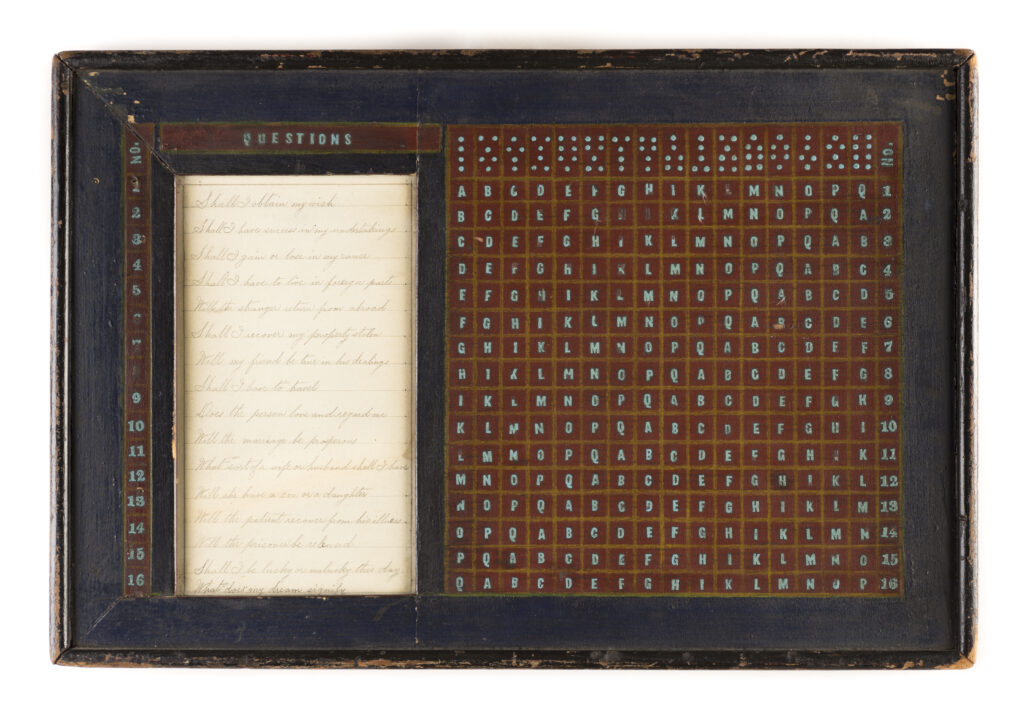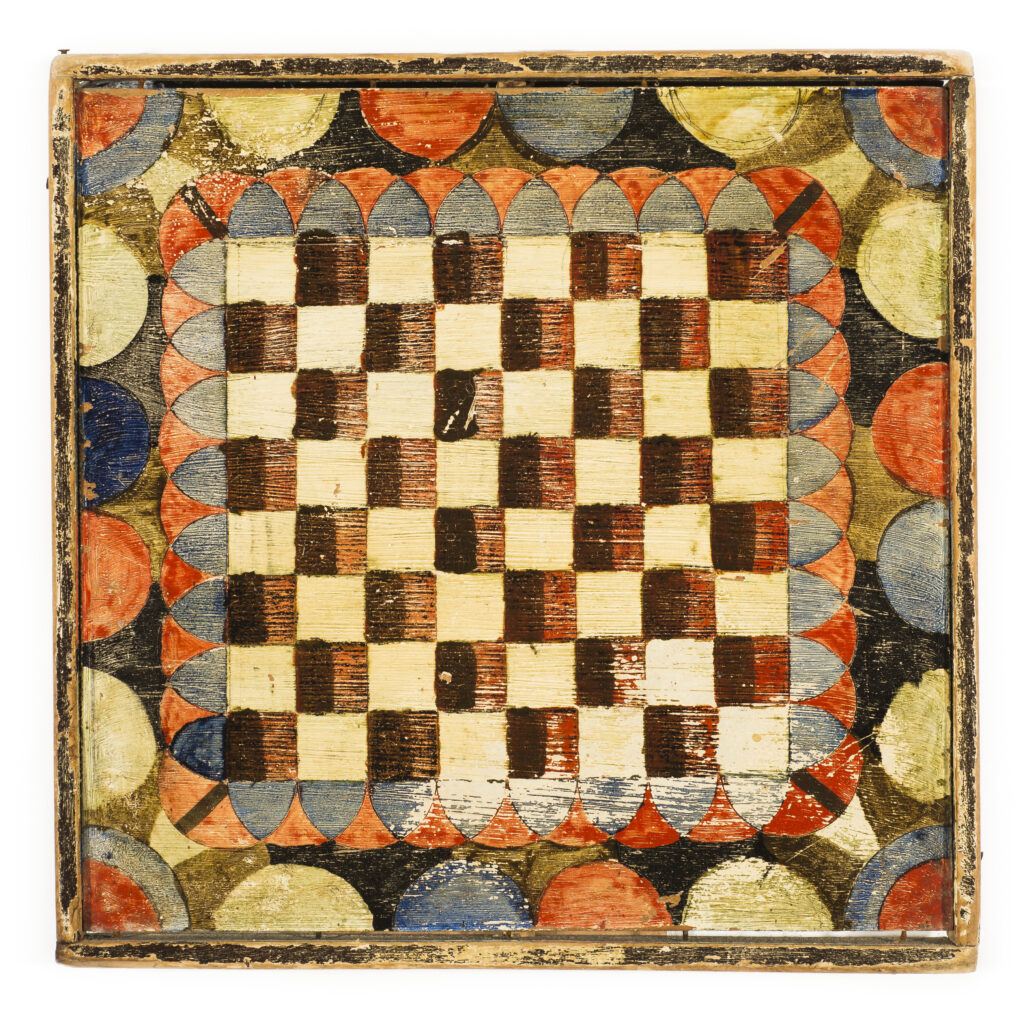
Think about the nostalgic times before video games, when families gathered around board games and spent their evenings and holidays together, playing Monopoly, Scrabble, or Parcheesi. I remember those days when we played monopoly, sitting in a circle on a large Oriental rug at my late grandmother’s house, and I believe that the monopoly board is still floating around my family’s home. What we can learn from the new exhibition Playing with Design: Gameboards, Art, and Culture at the American Folk Art Museum is that the golden age of board games in the US dates back to the late 19th century and the early years of the 20th century. This beautiful and unexpected exhibition takes us into the heart of those lost days and into the world of the art of the game.
Most of the gameboards included in the show were recently gifted to the Museum by Connecticut-based private collection of Bruce and Doranna Wendel, who have lived with their collection at their stately house for decades. To them, while the collection falls under the category of folk art, every piece is considered a form of art and their taste for abstract art has come to shape that collection. All of the board games were made by hand, each is unique, each personal, all painted on wooded boards and none was commercially produced. The collection dates back to the time before standardization and mass production were introduced into the world of game boards. You can see Parcheesi boards, Ludo, Chinese checkers, Mill games and many games which I could not identify.
The game boards in this collection exemplify the art movements of their time and are mostly abstract, reflecting the collectors’ taste. I particularly loved the section which includes games designed in bold, geometrical modernist patterns, inspired by the avant-garde movements of its time, and reminding the art work of Paul Klee and Ellsworth Kelly.
This is the second exhibition of this collection at the American Folk Art Museum. The first one, Winning Moves: Painted Gameboards of North America opened in the 80s, but the collection has deepened and grown since while the collectors have broadened their knowledge and defined their taste. In her essay, the exhibition’s curator Emelie Gevalt says that the boardgame was a part of the American daily life, and therefore, they ‘provide deep insight into the values and priorities of American culture.’ A wonderful example of material culture. Through the boardgames and the decoration employed in painting them, we discover morality, religion, and customs revealed in the imagery. It makes you want to go back to those days.
“Playing with Design: Gameboards, Art and Culture” will be on view at the American Folk Art Museum from September 13 through January 26. All images courtesy the American Folk Art Museum; photographyby Bruce C. Read.














Ciao Daniella
Solo per chiedere se posso partecipare e scrivere in italiano. Grazie Francesco
Yes, you can.